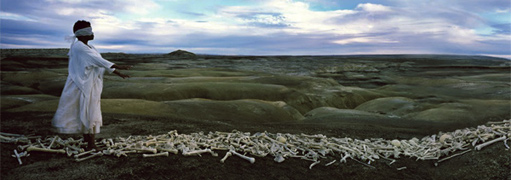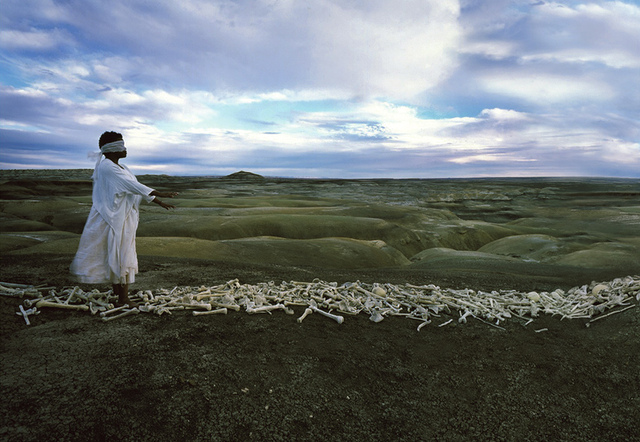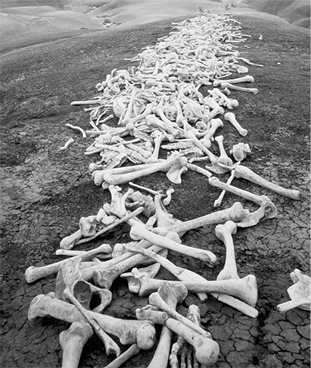Spectral figures clad in white float into the intersection of Fourth and Central. They carry armfuls of bones, which they deposit on the ground. As they retreat, more couriers appear and they too place dozens of skeletal pieces in the street. The cycle continues until 50,000 white offerings fill the crossroads. This is the first round of the activist art installation One Million Bones, and it happens on Saturday, Aug. 27.The project is the brainchild of Naomi Natale, and it recognizes victims and survivors of genocide in Sudan, Burma, the Democratic Republic of the Congo and other places in conflict. The eventual culmination will be in the spring of 2013, when 1 million bones will flood into Washington D.C.’s National Mall. Natale and the project are based in Albuquerque, but there are collaboration teams passing the word and making bones all over the nation.Besides spreading awareness of these atrocities, the project is a fundraiser. Each replica bone is created by a volunteer and then sponsored—either by the creator or someone else—for $5. At the completion of the installation, $5 million will be donated to institutions that fight genocide, such as the Genocide Intervention Network and Women for Women International. Ways to get involved, from sponsoring a bone to involving your school to hosting a bone-making event, are listed on the project’s website.“We’re really excited about this,” Natale says of the maiden version. “One, it marks a milestone in our journey to a million and, two, it’s our first preview installation. We wanted to do it in Albuquerque as a way of thanking the community for all this work they’ve given us.” She says that 200 volunteers are needed to place the pieces on Central, and anyone can show up to help. Shira Greenberg of Keshet Dance Company is choreographing the flow of performer traffic, but drop-ins will be able to follow along. Natale only asks that those who come to participate wear white.After the installation, there will be speakers at Amy Biehl High School, along with a reception. U.S. Representative Martin Heinrich will join special guests such as Eric Ndaheb, a survivor of the 2004 Gatumba Massacre in Burundi, and Carl Wilkens, an American who remained in Rwanda after U.S. evacuation orders. Then the bones will be removed from the intersection. Natale says the whole event is going to be documented through a time-lapse video: People will be able to watch the street fill up and then empty out again in just a few minutes. One Million Bones is an exercise in using art to send a message and organize people around an issue. The last thing Natale worked on was The Cradle Project, in which 555 artists from around the world constructed cradles to make people aware of the plight of orphans in sub-Saharan Africa. She says she’s realized people respond strongly to a visual image.It’s inconceivable that genocide still happens today, Natale adds, and that it spurs so little action. Although she wants to draw attention to the issue with the shocking sight of a mass grave on the National Mall, the symbol of the bone is also one that unites people. “It really is a project that is based in hope,” she says. “We do have hope, and we believe that our voices matter, and each of these bones represents a voice being sounded on this issue.”
One Million Bones initial installation Saturday, Aug. 27, 10 a.m.Guest speakers at noonFourth Street between Central and Goldonemillionbones.org











